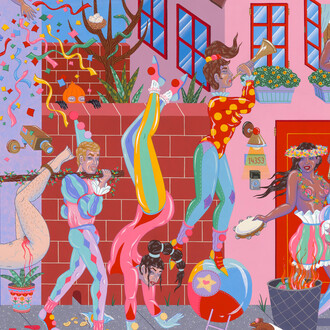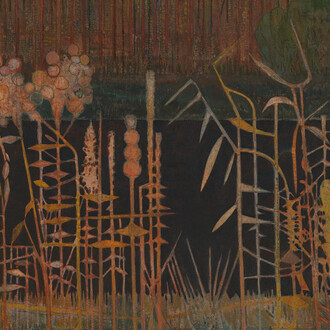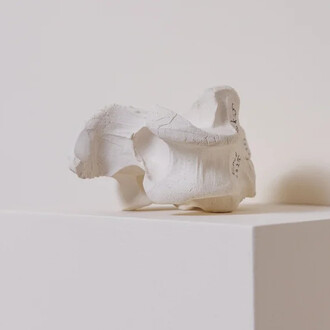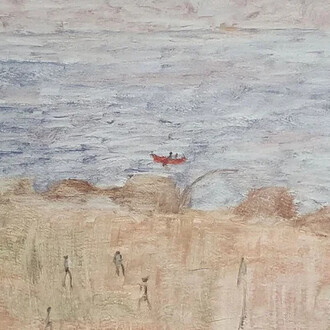The Los Angeles County Museum of Art (LACMA) presents We live in painting: The nature of color in mesoamerican art, a groundbreaking exploration of the science, art, and cosmology of color in Mesoamerica. Artists adorned the surfaces of buildings, clay vessels, textiles, bark- paper and deer hide pages, and sculptures with color, to (re)create the world by transforming raw materials into art.
The power of color emerged from the materiality of its pigments, the skilled hands that crafted it, and the communities whose knowledge imbued it with meaning. Just as dawn brings about life in color, and night transforms the world with darkness, artists use colors to express their understanding of life and time. Mesoamerican artists developed one of the most robust color traditions in the world, manufacturing stable and vibrant colors with minerals, flowers, tree barks, and even insects. Color is thus a means of keeping this ancestral knowledge. However, histories of colonialism and industrialization have long minimized the deep significance of color in the Indigenous Americas.
Featuring more than 270 objects, the exhibition features ceramic vessels, mural fragments, stone sculpture, painted amate paper, and textiles dyed with natural dyes, raw minerals, gold, jade, carved shell, and more. Notably, more than half of the exhibition is drawn from LACMA'’s renowned collection of the Art of the Ancient Americas. Unprecedented loans of artworks and archaeological artifacts, were made possible through collaborations with INAH (Mexico), many of which have never been displayed before. Visitors will also have the rare opportunity to view two Mesoamerican codices, Codex Selden and Codex Mendoza, on loan from Oxford’s Bodleian Library.
The exhibition partnered with two groups of contemporary Indigenous artists to revitalize artistic practices of pigment production. 17 works were commissioned from Nahua, Tzotzil, Mixtec and Zapotec artists to be in dialogue with ancient Mesoamerican art works in the exhibition.
This exhibition is presented as part of PST ART: Art & science collide. Southern California’s landmark arts event, PST ART, returns in September 2024, presenting more than 70 exhibitions from organizations across the region exploring the intersections of art and science, both past and present.
We live in painting is co-curated by Diana Magaloni, Deputy Director, Program Director & Dr. Virginia Fields Curator of the Art of the Ancient Americas, LACMA; Alyce de Carteret, Assistant Curator, Art of the Ancient Americas, LACMA; and guest curator Davide Domenici of the University of Bologna. The exhibition will travel to two other venues following its presentation at LACMA.
“Through groundbreaking research led by Diana Magaloni and her curatorial team, We Live in Painting brings new perspectives to ancient and contemporary Indigenous Mesoamerican cultures,” said Michael Govan, LACMA CEO and Wallis Annenberg Director. “Drawing extensively on LACMA’s remarkable collection of Mesoamerican artworks and complemented by a number of unprecedented loans from Mexico—this exhibition allows us to experience the cultural and cosmic power of color in a radically new way.”
Diana Magaloni adds, “We live in painting considers two sciences in dialogue: the Western science undertaken by contemporary scholars, and the Indigenous science of artistic production that, through millennia of empirical practice, engineered artificial pigments from the natural world. Progress in the former cultivates an appreciation for the latter, rendering the exceptional technical achievements of Mesoamerican artists legible to our audiences—a remarkable example of the collision between art and science.”
We live in painting furthers LACMA’s commitment to reconceive the museum’s stewardship of collections such as that of Art of the Ancient Americas. The museum has developed close, collaborative relationships with Indigenous artists, descendant communities, and international institutions to share Indigenous stories and perspectives. In preparation for this exhibition, curators partnered with Indigenous artists who are revitalizing the craft of making natural paints. LACMA supported a series of workshops in Xalitla, Mexico—a Nahua town known for its painters—where community members learned more about the art of crafting pigments from traditional materials from artist and scholar Tatiana Falcon. Their commissioned works, along with those of the other living Indigenous artists featured in this exhibition, including Tzotzil and Mixtec weavers and Ventura-based Zapotec-American textile artist Porfirio Gutierrez, stand as a testament to the resiliency and tenacity of Indigenous art makers.
















